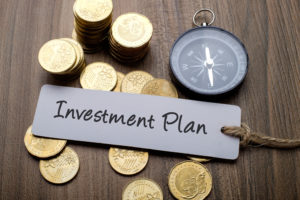Things to Consider for Your 2015 Capital Gains Tax
There are all kinds of investors in the world. Some are looking to make a quick buck by buying and then quickly selling stocks as soon as they increase in value. Other investors buy stocks with an eye toward the future, which means they are in it for the long haul.
In any case, anyone who invests wants to be successful at it. It’s a great feeling to buy stock in a company and see that stock increase in value. However, at some point if you plan on selling that stock and cashing in or your gains, you will have to give a portion of those gains to the taxman. What percentage you will owe will depend on the size of your gain and how long you have owned the stock.
The government wants investors to hold onto their stocks longer. To encourage this they have a lower tax percentage on stocks held longer than a year. Whether you’re a quick turnaround trader or a long-term investor here’s what you should be aware of in 2015 for your capital gains taxes.
First, generally all you need to know to determine your capital gains is the difference between what you paid for the stock and how much you sold it for. When you know that amount then you can calculate the tax. Your tax rate will depend on which bracket you’re in. There are three that apply:
- If your ordinary income puts you in the 10-15 percent tax bracket, then your long-term capital gains rate is 0 percent.
- If your ordinary income falls in one of the 25, 28, 33, or 35 percent tax brackets then your long-term capital gains rate is 15 percent.
- If your ordinary income is in the 39.6% tax bracket, then your long-term capital gains rate is 20%.
There are a few other caveats to remember. For high-income earners, there is an additional 3.8 percent surtax on net investment income. Also, you only pay taxes on the net of your capital gains, which can make a big difference if you sell more than one stock in a year. If you want to learn more about capital gains taxes then please contact GROCO for more answers. Click here or call us at 1-877-CPA-2006.
Voluntary Compliance Program for Withholding Agents
Voluntary Compliance Program for Withholding Agents In a memo dated February 25, 2005, the IRS Large & Mid-size Business Division, announced that based on recently received Chief Counsel Advice, withholding agents participating in the Section 1441 Voluntary Compliance Program (VCP) would not be subject to interest charges under certain circumstances. Section 1441 requires withholding agents…
Are Casualty and Theft Losses Tax Deductible?
Are Casualty and Theft Losses Tax Deductible? If your property is destroyed, damaged, or stolen due to casualty or theft, you may be entitled to a tax deduction. A casualty is the damage, destruction, or loss of property resulting from an identifiable event that is sudden, unexpected, and unusual. A sudden event is one that…
How to Defend Yourself When Your QuickBooks Files Are Part of an Audit
How to Defend Yourself When Your QuickBooks Files Are Part of an Audit The world of technology has changed just about every aspect of our lives. The tax and accounting world is no different. Thanks to online tax programs and software packages designed for accounting purposes, keeping a solid record of your important financial information…
Develop a Sound Investment Plan
Develop a Sound Investment Plan When the stock market heads south, is your first instinct to sell stocks and get into something safer? With a well-planned portfolio, that’s probably the last thing that you should be doing. After all, a plan tailors a mix of stocks, bonds and cash equivalents to your particular financial goals,…


